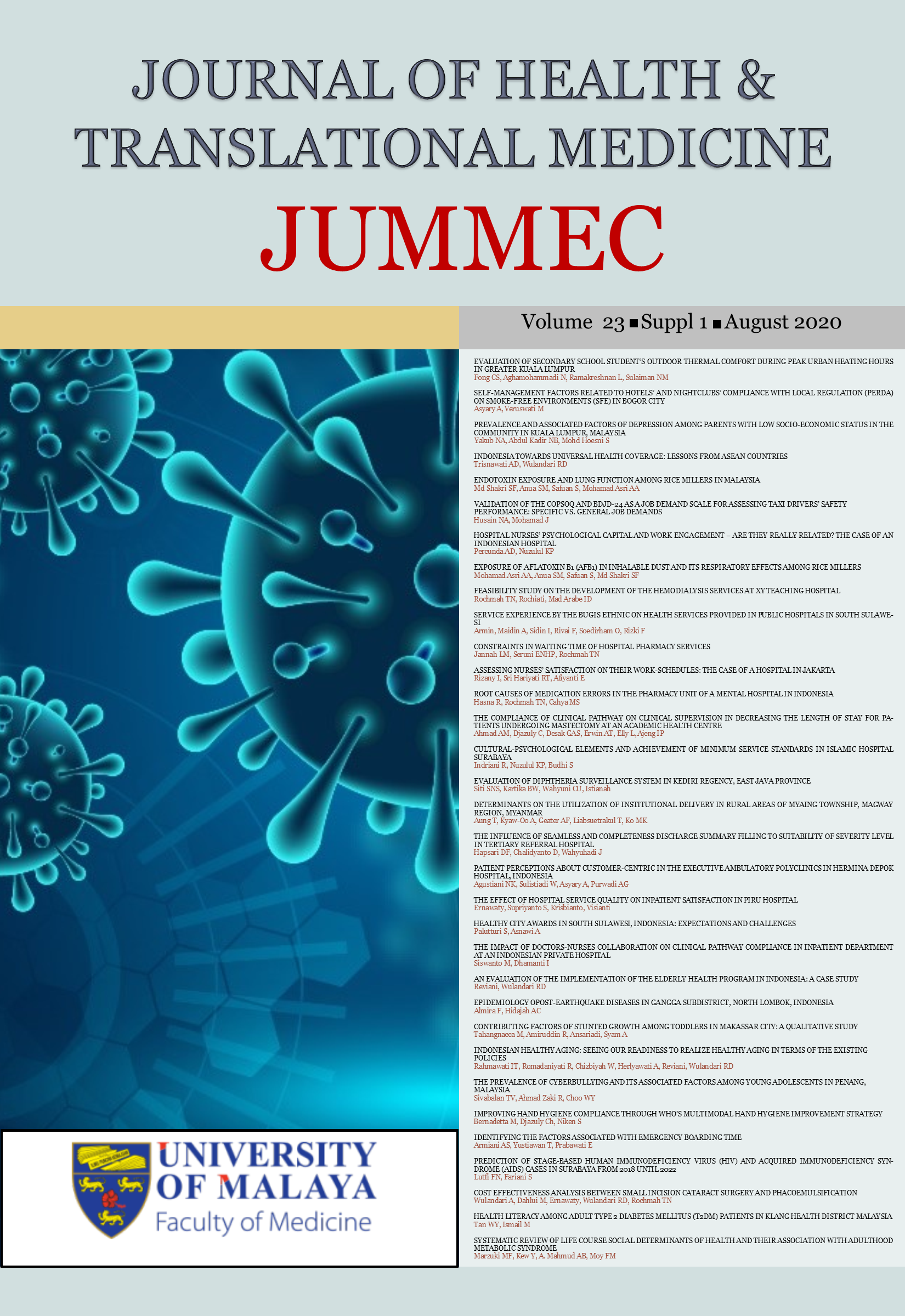EPIDEMIOLOGY OF POST-EARTHQUAKE DISEASES IN GANGGA SUBDISTRICT, NORTH LOMBOK, INDONESIA
Keywords:
Earthquake, Disaster, Surveillance, DiseaseAbstract
Background: An earthquake with a magnitude 7.0 has shaken northern Lombok. Eight Centres for Public Health or called Puskesmas (Pusat Kesehatan Masyarakat) in North Lombok district were damaged. The threat of post-disaster diseases continues to lurk, such as infectious diseases related to epidemics, mental health, non-infectious diseases caused by trauma and poor environmental conditions among the refugees.
Objective: The objective of this study is to analyze the post-disaster diseases that occur in the North Lombok District, especially in the Gangga Subdistrict.
Methods: This study was a descriptive study carried out for 14 days. The data was obtained from the daily post-disaster surveillance system using WhatsApp and Epi Info Software made by the Control Disease Centre, Indonesia Ministry of Health and carried out by the surveillance officers and FETP (Field Epidemiology Training Programme) students who were placed in each Puskesmas in the North Lombok District.
Results: Based on gender, 52% of the total patient visits in Puskesmas Gangga were women. The most age group were 18-45 years. The most cases reported were the Acute Respiratory Infection (ARI) as much as 23% of total cases, diarrhoea as much as 15% cases and 43% were other cases which were not included in the system. There was one measles suspect and four varicella suspects. The total deaths that were reported in the Puskesmas Gangga were 89 cases until August 31, 2018.
Conclusion: The most reported cases in the Puskesmas Gangga were ARI and Gastrointestinal diseases. The monitoring of the most reported cases and potential outbreaks such as diarrhoea, measles and varicella needs to be optimized. The epidemiological investigations need to be conducted to look for disease causes and resolve additional cases. Collaboration among the provincial government, district government, health office, and other stakeholders is needed to accelerate the recovery.
Downloads
Downloads
Published
Issue
Section
License
All authors agree that the article, if editorially accepted for publication, shall be licensed under the Creative Commons Attribution License 4.0 to allow others to freely access, copy and use research provided the author is correctly attributed, unless otherwise stated. All articles are available online without charge or other barriers to access. However, anyone wishing to reproduce large quantities of an article (250+) should inform the publisher. Any opinion expressed in the articles are those of the authors and do not reflect that of the University of Malaya, 50603 Kuala Lumpur, Malaysia.


